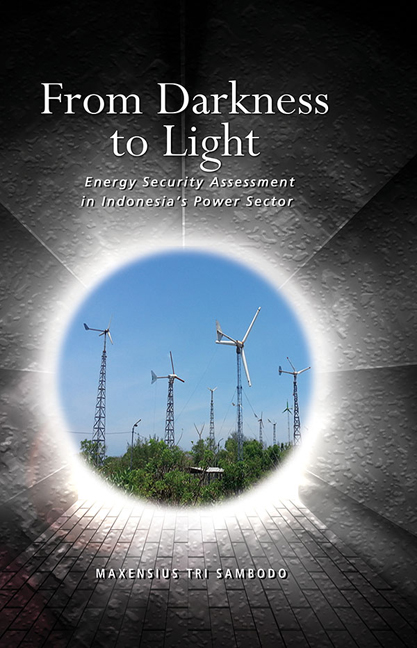Book contents
- Frontmatter
- Dedication
- Contents
- List of Tables
- List of Figures
- List of Abbreviations
- Acknowledgements
- 1 Introduction
- 2 A Historical Overview of the Electricity Sector
- 3 Electricity Production and Consumption: Boom and Bust
- 4 Economic Crisis and Its Impact on the Power Sector
- 5 Electricity and Economic Growth
- 6 Electricity and the Environment
- 7 The Rural Electricity Programme in Indonesia
- 8 Conclusion
- Index
- About the Author
6 - Electricity and the Environment
Published online by Cambridge University Press: 05 July 2016
- Frontmatter
- Dedication
- Contents
- List of Tables
- List of Figures
- List of Abbreviations
- Acknowledgements
- 1 Introduction
- 2 A Historical Overview of the Electricity Sector
- 3 Electricity Production and Consumption: Boom and Bust
- 4 Economic Crisis and Its Impact on the Power Sector
- 5 Electricity and Economic Growth
- 6 Electricity and the Environment
- 7 The Rural Electricity Programme in Indonesia
- 8 Conclusion
- Index
- About the Author
Summary
TRAPPED CARBON IN THE POWER SECTOR
The electricity sector is not only important for economic development but it also has a strong impact on the environment. One of the major contributors of carbon dioxide emissions comes from the energy sector, particularly from electricity generation. According to IEA (2011), direct carbon dioxide emissions from fossil-fired power generation amounted to 27 Percent of the global greenhouse gas emissions in 2005. Furthermore, about 73 Percent of the total greenhouse gas emissions from power generation in 2007 originated from coal-fired power generation. Almost half of the 2020 energy-related carbon dioxide emissions are expected to be emitted by the major emerging economies, where the power sector and industries play an even larger role (IEA 2009).
As can be seen in Table 6.1, in 2010, the carbon dioxide emissions in Indonesia amounted to 434 million tons (about 5 Percent and 22 Percent of the total carbon dioxide emissions from China and India respectively). Although Indonesia was higher than India in terms of carbon dioxide emissions per capita, Indonesia had a lower ratio intensity for carbon dioxide emissions with respect to GDP and energy use compared to China and India. This indicates that Indonesia's economy is less carbon intensive compared to China and India. For a single unit of energy use, Indonesia also emitted less carbon dioxide than the other two countries. However, it does not imply that Indonesia has the “right” to emit more carbon dioxide from energy production. In fact, the Indonesian energy sector needs to emit less carbon dioxide in the future.
In 2011, the total carbon dioxide emissions in Indonesia amounted to approximately 447.18 MtCO2 and excluding LUCF (Forestry and Land Use Changes), the energy sector contributed 435 MtCO2 of that amount. Most of the carbon dioxide emissions in the energy sector consisted of emissions from the electricity generation, manufacturing and transportation sectors (see Figure 6.1). In Indonesia, electricity and heat made up the highest contributions to carbon dioxide emissions from the energy sector; their proportions of the total will increase in the future if the planned energy systems continue to be dependent on carbon intensive sources such as steam coal.
- Type
- Chapter
- Information
- From Darkness to LightEnergy Security Assessment in Indonesia's Power Sector, pp. 112 - 135Publisher: ISEAS–Yusof Ishak InstitutePrint publication year: 2016



